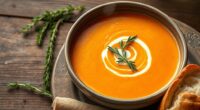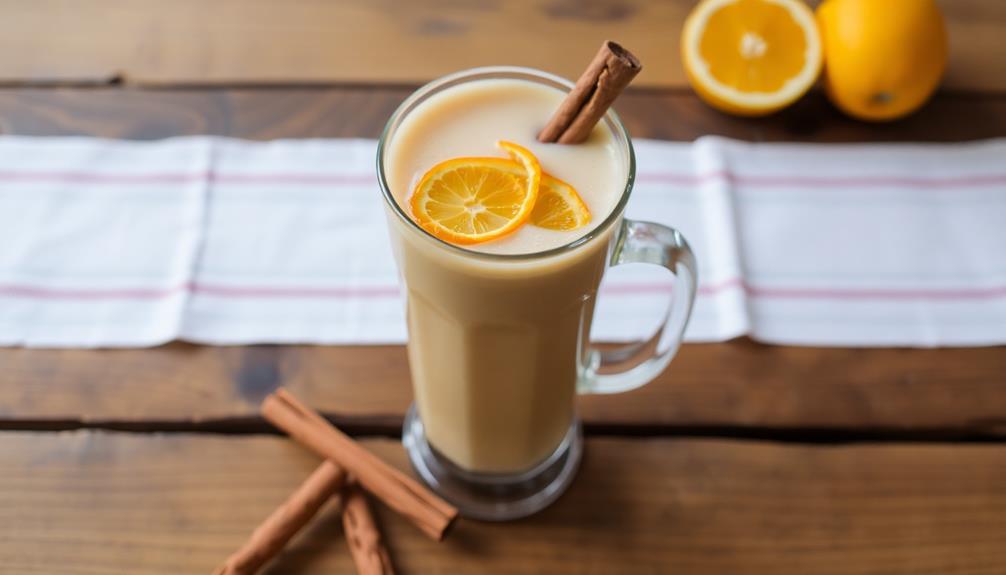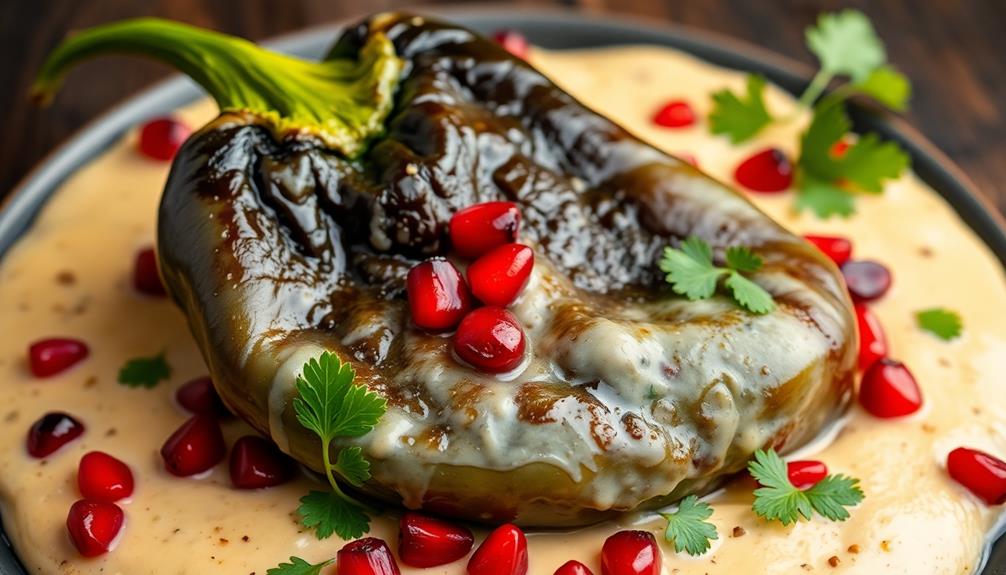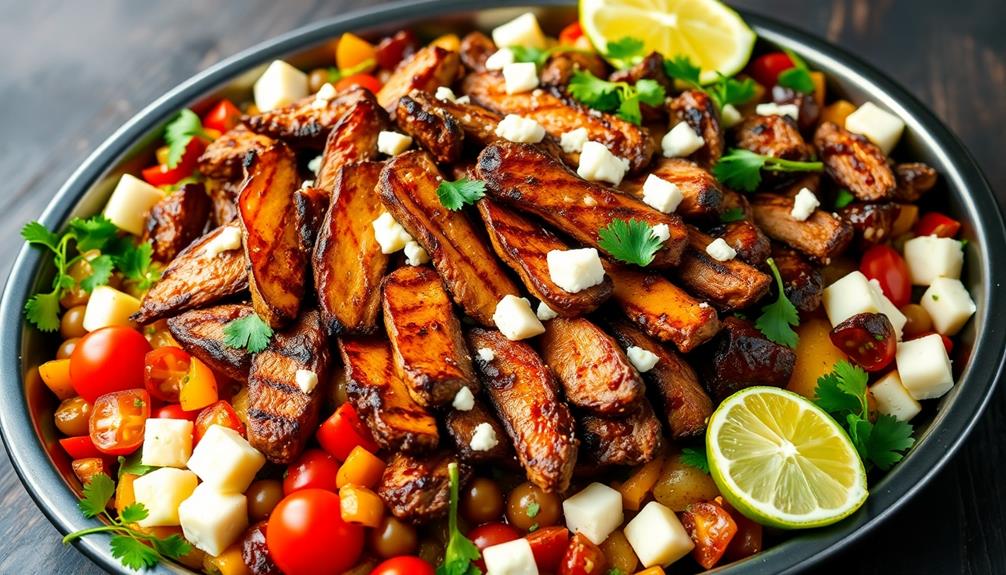During the Day of the Dead, you’ll find two iconic treats that honor loved ones and celebrate life: pan de muerto and sugar skulls. Pan de muerto, a round bread decorated to symbolize life and death, is often flavored with orange zest and dusted with sugar. Sugar skulls are colorful, decorated confections that represent departed souls and their personalities, emphasizing joy over mourning. If you explore further, you’ll discover how these treats deepen cultural connections and meaningful traditions.
Key Takeaways
- Pan de Muerto is a traditional bread symbolizing the cycle of life and death, often flavored with orange zest and decorated to resemble bones.
- Sugar skulls are colorful confections representing departed loved ones, decorated with intricate designs and personalized names.
- Both treats are integral to Día de los Muertos altars, honoring ancestors and celebrating life’s continuity.
- Making and sharing these treats deepens cultural connection, reflecting values of remembrance, joy, and family bonds.
- These symbolic foods embody Mexico’s rich heritage, blending indigenous traditions with Spanish influences to celebrate life and death.
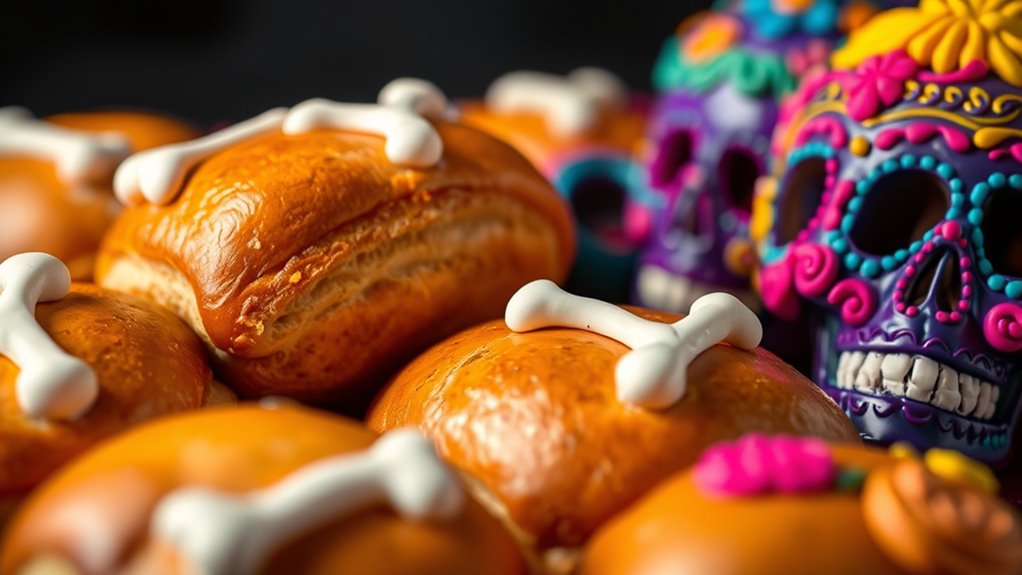
Day of the Dead treats are a vibrant and delicious way to honor loved ones who have passed away. These treats, especially pan de muerto and sugar skulls, aren’t just sweets; they embody rich history, traditions, and cultural significance that connect you to centuries of Mexican heritage. Understanding their origins helps you appreciate why they hold such importance in Day of the Dead celebrations. The history of these treats dates back to pre-Hispanic times when indigenous peoples honored their ancestors with offerings that included food, flowers, and symbolic objects. When Spanish colonizers arrived, they blended these traditions with Catholic practices, giving rise to the modern Día de los Muertos festivities, where food plays a central role. Pan de muerto, meaning “bread of the dead,” became a staple offering on altars, symbolizing the cycle of life and death. Its round shape often represents the circle of life and the afterlife, while the decorative elements mimic bones and skulls, reminding you of mortality and remembrance. Over time, this bread evolved into a sweet, fluffy treat flavored with orange zest and dusted with sugar, making it both comforting and celebratory. Sugar skulls, or calaveras de azúcar, also hold deep cultural significance. These intricately decorated confections symbolize the departed and serve as a reminder that death is a natural part of life, not something to be feared. You often see these skulls decorated with bright colors, flowers, and personalized names, which reflect the individuality of those being remembered. The tradition of making sugar skulls began in the 19th century, and today, they are a colorful, playful expression of Mexican artistry and faith. Their vivid decorations and the way they are personalized highlight the Día de los Muertos’ focus on celebrating loved ones’ lives rather than mourning their loss. Both pan de muerto and sugar skulls embody the core values of the celebration: honoring ancestors, celebrating life, and embracing death with joy and reverence. Their cultural significance extends beyond mere tradition; they serve as symbols of continuity, family bonds, and cultural pride. When you partake in making or sharing these treats, you connect with a centuries-old tradition that honors the cycle of life, reminds you of your roots, and keeps the memory of your loved ones alive. These sweets are more than just festive foods—they are tangible expressions of a profound cultural narrative that invites you to reflect, remember, and celebrate in a colorful, meaningful way. Understanding the cultural significance of these treats deepens your appreciation of their role in honoring ancestors and cultural heritage.
Frequently Asked Questions
What Are the Origins of Pan De Muerto?
You should know that pan de muerto has deep historical roots in Mexican culture. Its origins trace back to pre-Hispanic traditions, where it symbolized the cycle of life and death. The bread’s round shape with a cross on top represents the cycle of life and the departed. Its cultural symbolism honors ancestors during the Day of the Dead, making it a meaningful treat that connects you to Mexican heritage and spiritual beliefs.
How Are Sugar Skull Designs Created?
You create sugar skull designs by using traditional decorating techniques, such as piping colorful icing, applying edible paints, and adding decorative elements like sequins or beads. You start by shaping the skull with molded sugar, then carefully outline features like eyes, nose, and mouth. You emphasize vibrant colors and intricate patterns, reflecting cultural symbolism. This hands-on approach lets you craft unique, beautiful sugar skulls that honor the tradition and celebrate loved ones.
Can These Treats Be Made at Home?
Yes, you can definitely make these treats at home! Use DIY decorations like colorful icing and edible markers for sugar skulls, and follow baking tips to get the perfect Pan de Muerto. Start with simple recipes, and don’t be afraid to experiment with flavors and designs. With patience and creativity, you’ll create beautiful, meaningful treats that celebrate the Day of the Dead right in your own kitchen.
Are There Regional Variations in Recipes?
Like a tapestry woven with vibrant threads, regional ingredients and cultural influences shape recipes differently across Mexico. You’ll find variations in Pan de Muerto and sugar skulls, reflecting local flavors and traditions. Some regions add orange zest or anise, while others incorporate unique toppings. Embrace these differences—they enrich your baking experience and honor the diverse cultural roots behind each treat. Exploring these variations connects you more deeply to the spirit of the celebration.
How Do These Treats Symbolize Honoring the Deceased?
You honor the deceased through these treats by sharing them during family traditions, which strengthen cultural significance and keep loved ones’ memories alive. Pan de muerto’s round shape symbolizes life and death, while sugar skulls represent the spirits returning to visit. By preparing and enjoying these foods together, you actively celebrate your heritage and pay homage to ancestors, making the Day of the Dead a meaningful, communal event.
Conclusion
As you savor these traditional treats, it’s almost as if the vibrant colors and rich flavors mirror the very spirit of the Day of the Dead. Coincidentally, each bite reminds you of loved ones celebrated with sugar skulls and pan de muerto, connecting past and present in a shared memory. In these small, sweet moments, you realize that honoring tradition isn’t just about history—it’s about feeling the warmth of remembrance, uniting generations in a timeless dance.

